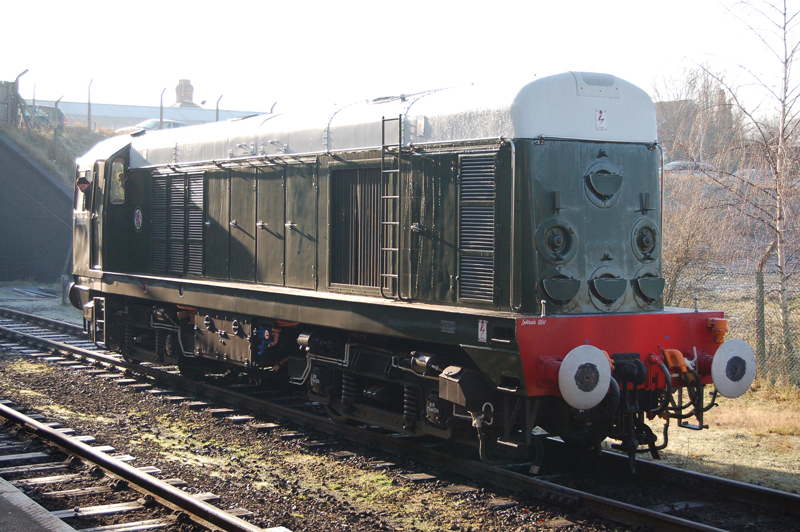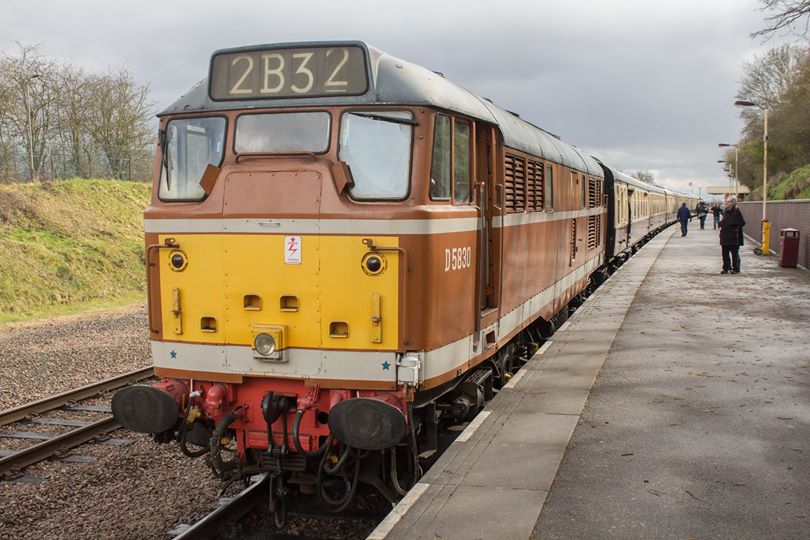Built by BRUSH Ltd, Loughborough 1965, Works No. BS467
Wheel Arrangement: Co-Co (Two bogies with three axles independently driven)
Weight: 111 – 121 Tons
Max Speed: 95 MPH
Fuel Tank Capacity: 810 Gallons
Length: 63 ft 7ins
Engine size: 240 Litres
Dual Braked
One of 512 built
Originally Built with a Sulzer 12LVA24 (Vee engine)
Turbo Charged and Intercooled
2650 HP
Max Tractive Effort 55,000 lbs
TOPS Classification Class 48
Re-engined in 1969 with a Sulzer 12LDA 28C (Twin Bank – 2 Crankshaft engine)
Turbo Charged and Intercooled
2750 HP
Max Tractive Effort 60,000 lbs
TOPS Classification Class 47
Fitted with a Spanner Mk III Boiler.
It is believed that this was the last working boiler steamed by BR
Locomotive History
D1705 or Brush Type 4 was built by Brush at its Falcon works, Loughborough. Its works no. was BS467/1965, and its first British Rail no. was D1705. It was one of 5 locomotives (D1702 to D1706) to be built with a Vee form Sulzer engine 12LVA24, the same engine used in the 10 locomotives exported to Cuba and a common engine in France.
It was built with a Spanner Mark III boiler. The generator being different from the standard Class 47 as the engine rotated clockwise instead of anticlockwise. The remainder of the equipment was standard to the rest of the fleet
It entered traffic in November 1965 and allocated officially to Tinsley, but outstationed at Shirebrook, followed by a move to Norwich, then to Stratford in 1969, Holbeck, Gateshead, Finsbury Park Eastfield Haymarket, only to be returned to Tinsley in 1970. Then Bescot, and Crewe.
The experiment was not deemed a success and D1705 was converted from a Class 48 to a standard Class 47 with a 12LDA28C, twin bank engine, the difference being that it has two crankshafts instead on one, during a classified repair at Crewe works between November 1970 and April 1971. It was renumbered 47117 under the 1973 TOPS renumbering scheme. The only other number it carried.
It was the last Class 47 to provide steam heat, and still has a complete Spanner mark III boiler although it is currently unserviceable.
At Tinsley it was unofficially named Sparrowhawk and this was painted onto the body side in white. At some time it had a knock and the cab was replaced with one without the head code recess.
Withdrawn with electrical faults in July 1991.
Purchased by Pete Waterman in 1993 who had ideas to re-install the vee form engine and convert it back to a Class 48. A new Automatic Voltage Regulator (AVR) was installed and it became operational again, and was based on the East Lancashire Railway at Bury.
It arrived at the Great Central Railway in 1996 on hire from Mr Waterman for a gala, during its visit it was offered for sale and without the need to pay for transport costs the Type One Locomotive Company bought it.
It was used in the testing of the Class 57’s at Loughborough in 1998, by which time it had lost its faded BR Blue for two tone Green. It later carried full yellow ends for a period; this was done at the request of the BBC who wanted it for an episode of Casualty where an ambulance appeared to crash through Beeches Road over bridge and, after the train had passed, land on the track.
It lost the non standard end after a low speed collision, when BR Standard 5MT 73156 was pushed into the front. The replacement panel being acquired from Brush during the conversion of another batch of Class 57’s, this time for Virgin.
Repainted in 2003 back to 1960’s two tone Green with small yellow ends for the GCR Diesel Gala. D1705 was named Sparrowhawk on June 19th 2004, by Pete Waterman on the platform at Loughborough. The plate and position is in the standard Great Western font and location as only locomotives allocated to them were named in green.
On 25th October 2015 D1705 left the Great Central Railway to Boden Rail Engineering Ltd, which at the time was based at Washwood Heath for roof and body work repairs and for a full repaint.
On the 21st July 2017 following all body work repairs and repaint into Blue with full yelow ends D1705 returned to the Great Central Railway as 1705. Following alot of work by the T1LC volunteers 1705 returned to service in April 2018.
1705 Mainline career stories
Click here for stories of 1705 mainline service career.


